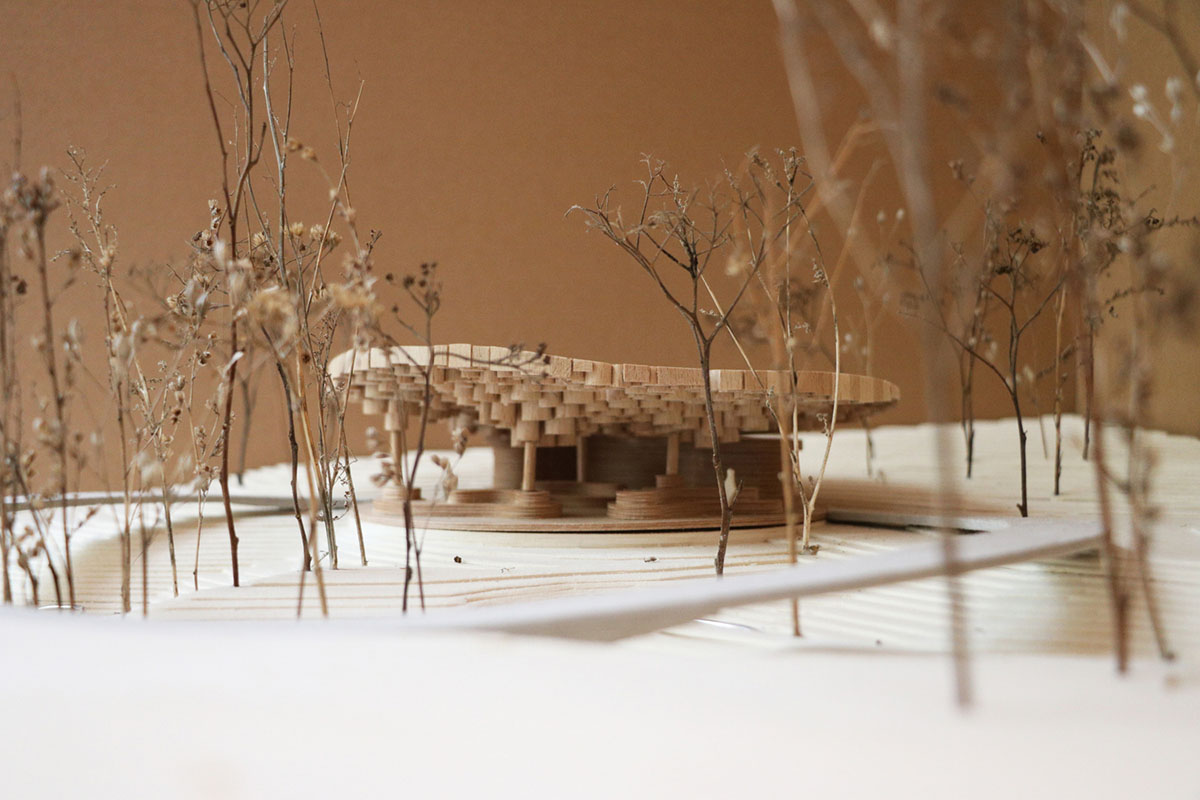Submitted by WA Contents
Francis Kéré's rounded pavilion for Montana's Tippet Rise Art Center breaks ground soon
United States Architecture News - Dec 14, 2018 - 04:00 14800 views

The Tippet Rise Art Center announced that construction work will soon begin on Francis Kéré's rounded pavilion in Fishtail, Montana. The 200-square-metre pavilion will be a new gathering space for the Tippet Rise Art Center designed by Berlin-based Diébédo Francis Kéré as a quiet, protective shelter for the visitors of the ranch.The pavilion is scheduled to open in summer 2019.
The architects released his first conceptual design in May 2018. The first renderings show that the pavilion will provide a warm and calm environment as it is surrounded by wooden seating decks and ceiling that form the overall structure of the pavilion.
The pavilion is designed in order to emphasize the stunning views of the surrounding landscape through organically shaped sittings, positioned strategically. Inspired by the traditional togunas of the Dogon culture of Mali, which means sacred shelters with wooden pillars, carved with ornaments representing the ancestors, the pavilion is being built close to the art center's central campus, amid aspen and cottonwood trees near the bank of Grove Creek.

Situated in a slightly sunken landform between the main facilities of the Art Center and the beginning of the hiking tracks, the pavilion rises in a clearing surrounded by peaceful aspen trees, facing a small creek where transparent water comes from the mountains and runs through the soft topographies of the site.
The round pavilion crosses the path of a circular aerial bridge that spans over the creek and leads the visitor in a sensory journey through the natural landscape. The pure, circular shapes of the project are ensconced in the natural context as iconic gestures and offer a complete experience for the visitor, who can explore them with no defined beginning or end.
The bridge, flying over the creek like a soft ribbon, is anchored to the ground in only two points in order to preserve as much as possible the natural landscape.

The visitor who walks on it can explore his own senses in response to the surroundings: the music of the river, the birds’ chirping, the breeze between the leaves on the trees and the smell of the tall grass around him trigger his senses and accompany his path. On the bridge, a number of specific views is highlighted by seating points until, on the other side of the creek, the visitor can observe the romantic view of the meadows and the hills blending with the sunset.
Entirely carved in wooden logs, the pavilion symbolically invites the visitor, who in the Tippet Rise Art Center is confronted with nature at its widest scale, to access the most secret part of nature, the heart of the trees. The sustainable pine wood used for the entire pavilion, locally sourced from a natural pruning process that saves forests from parasitic bugs, is employed in its raw appearance.

"On the canopy, it is carved sinuously in order to create a rounded topography that blends in the surrounding hills. An elevated platform sculpted on its top allows a small group of visitors to climb on the roof through a hidden stair and observe the sunset and the landscape through the canopies of the aspen trees," said Kere Architecture in its project description.
"At the same time massive and light, the roof is inspired by the "toguna", the traditional most sacred space in every Dogon village, a wooden and straw shelter designed in order to protect from the sun but at the same time to allow the ventilation of the shaded space underneath."
In the pavilion, the sunbeams penetrate between the vertical logs, creating a "rain of light" effect that softly hits the underlying seatings, equally carved in wood. The spatial complexity of these elements encourages different appropriations by the visitor, who is invited to inhabit them at his wish.

Through exploration, the user can in fact discover the different spatial configurations of the pavilion, gather in small groups and have a chat between friends, lie and watch the romantic views with his partner, sit and meditate in solitude on his visit of the Art Center, or explore with his children the "color cave", sensory tunnel carved in wood.

The pavilion welcomes the visitors and the whole community that revolves around the Tippet Rise Art Center, who will be ideally bonded with the community living in Francis Kéré’s home village in Burkina Faso, Gando, as the pavilion in Montana will be built in parallel with the Naaba Belem Goumma Secondary School in Gando, dedicated to Francis Kéré’s father, which will be open to the children of the entire neighboring area in the African savannah.

All images courtesy of Kere Architecture
> via Kere Architecture
